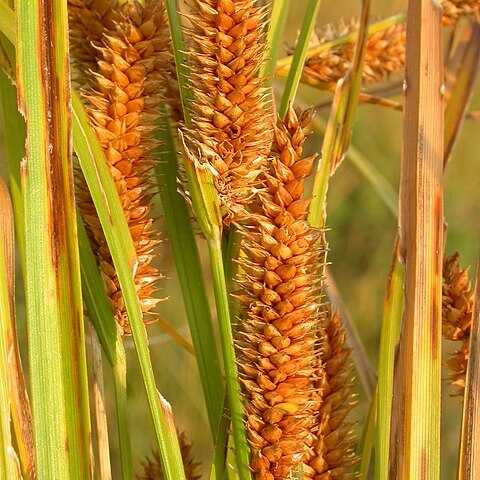Plants colonial; rhizomes long. Culms trigonous in cross section, 25–100 cm, smooth or somewhat scabrous-angled distally. Leaves: basal sheaths brown or lightly tinged with pinkish red, spongy-thickened; ligules as long as wide; blades pale to mid green, flat to broadly V-shaped, widest leaves 4.5–12(–15) mm wide, glabrous. Inflorescences 10–40(–50) cm; proximal bract 12–55(–75) cm, exceeding but not more than 2.5 times longer than inflorescence; proximal 2–5 spikes pistillate, erect or the proximal ascending, ca. 20–150-flowered, cylindric; terminal 2–5 spikes staminate, well elevated beyond summit of separate pistillate spikes. Pistillate scales lanceolate ovate, 2.6–5.5(–7.6) × 0.8–1.7(–2.1) mm, mostly shorter than perigynia, margins entire, apex acute to acuminate, awnless (rarely acuminate-awned). Perigynia spreading, often green or straw colored, 9–15-veined, veins running into beak, ovate, (3.2–)4–8.6 × 1.7–3 mm, apex contracted; beak (1–)1.2–2.7 mm, bidentulate, smooth, teeth straight, 0.2–1.3 mm. Stigmas 3. Achenes brown, symmetric, not indented, trigonous, smooth.
A sedge. These grow in clumps and have grass like leaves and solid stalks.


